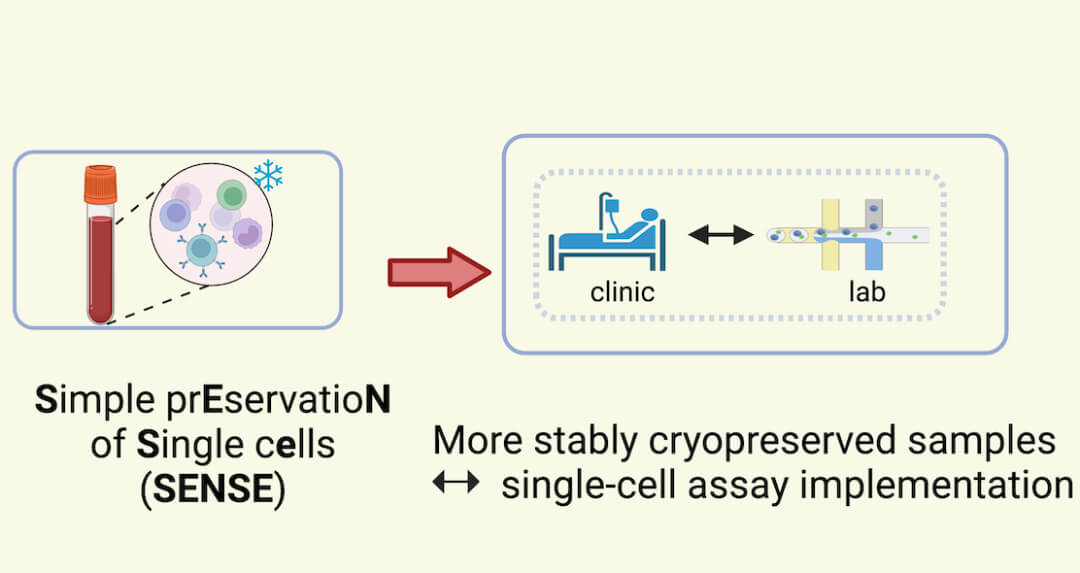
Background: Current methods for preparing and cryopreserving single-cell suspensions for scRNA-seq are cumbersome, limiting their clinical adoption. We have established a method, Simple prEservatioN of Single cElls (SENSE) for single-step cryopreservation of blood along with granulocyte depletion for generating high-quality single-cell profiles. Methods: Six samples were obtained from Juvenile Idiopathic Arthritis (IA) (n=5) and Lupus (n=1) patients and processed into two aliquots with one aliquot processed for isolation of PBMCs while the other aliquot was frozen using a cryopreservation solution. Single-cell assays and sequencing were performed along with single-cell profiling, comparative analysis of cell types across methods, cellular communication and Interaction analysis. Quality control measures along with batch-effect, doublet detection, mitochondrial staging and cellular enrichment were compared between methods. Additionally, an external single-cell gene expression dataset for Frozen PBMC (from 10x genomics) was compared with the PBMC data.
Results: We generated highly viable (86.3 ± 1.51%) single-cell suspensions and profiles of 22,353 cells from six blood samples using the SENSE method. Deep characterization of the SENSE method showed high-quality profiles of lymphoid and myeloid cell types concordant with the multistep density-gradient based peripheral blood mononuclear cells (PBMCs) profiling method. Additionally, the SENSE method exhibits significantly higher T-cell enrichment enabling deep characterization of T-cell subtypes. The SENSE and PBMC methods depicted high transcriptional, and cellular communication network level similarities across cell types, with no batch effect except in myeloid lineage. Comparative analysis with external PBMC data consistently demonstrated similar cellular profiles, validating the reliability of the SENSE method for translational single-cell research. Conclusions: Collectively, these results present SENSE as a novel approach for the cryopreservation of blood samples, providing researchers with a facile method for rapid and reliable preparation of PBMC samples for single-cell analysis.

